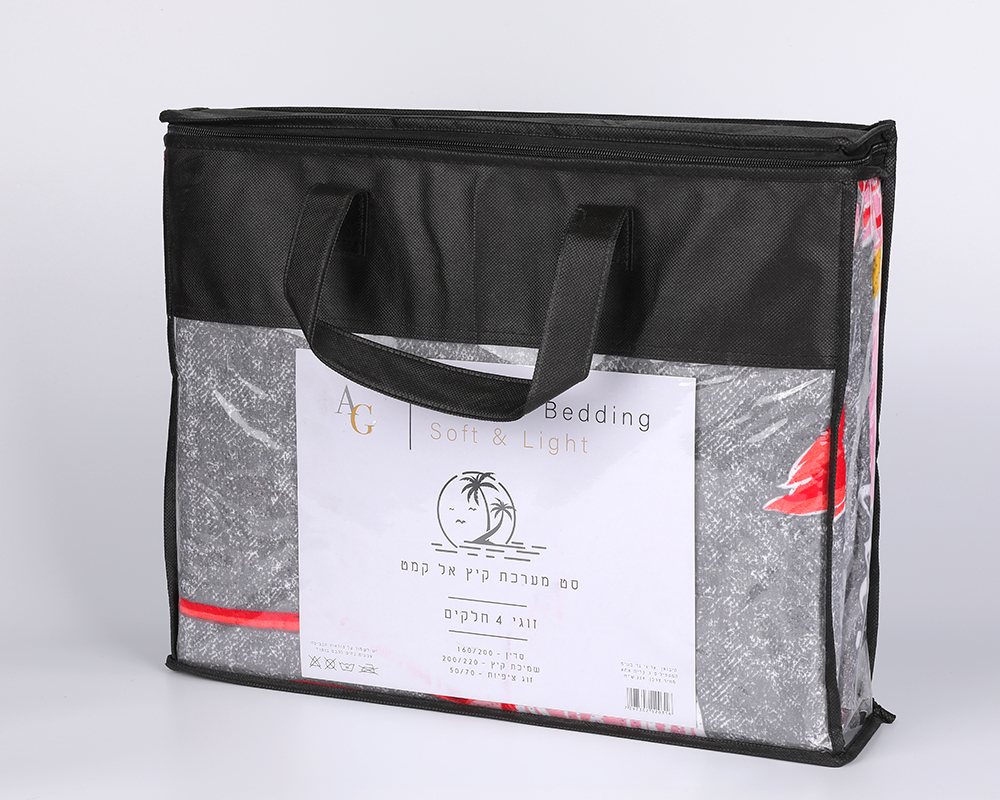Search...
The connection between durability and care in terms of material quality for home textile bedding sets is critical because the longevity of bedding largely depends on both the inherent quality of the material and how well it is maintained. Here's how the two are interlinked:
Natural fibers like cotton, linen, and silk tend to offer more breathability and comfort but may require more delicate care to maintain durability. High-quality cotton (such as Egyptian or Pima) and linen are highly durable but need proper washing and handling to prevent weakening.
Synthetic fibers such as polyester and microfiber are more resistant to wear and tear and can handle more rigorous care routines. They often last longer without as much maintenance compared to natural fibers.
Long-staple fibers (like those in high-quality cotton) are more durable due to fewer exposed fiber ends, which reduces pilling and fabric wear over time. Strong fibers, especially in tightly woven fabrics, resist fraying and breakdown with proper care.Synthetic materials are known for their strength and resistance to stretching, shrinking, and fading, making them more durable even with less meticulous care. However, blends that incorporate polyester with natural fibers (cotton-polyester) offer a good balance of softness and durability.
The type of weave (e.g., percale, sateen, or twill) influences how durable a fabric is. Percale, a tighter weave, is known for its crispness and long-lasting durability, while sateen is softer but more prone to snagging or pilling if not properly cared for. Twill is highly durable, with a denser construction, making it resistant to wear and tear.
High-quality cotton and linen can last a long time, but they need to be washed with care. Cold or warm water washing helps preserve fiber strength and color, while high temperatures can cause shrinkage and degrade fibers over time.Silk requires hand-washing or delicate machine cycles, as harsh detergents and high temperatures can damage the fibers. This fabric’s durability is highly reliant on careful handling.
Polyester and Blends are generally easier to maintain, and their durability can withstand frequent washing in standard cycles without damage. They resist shrinking and fading, but excessive heat can still degrade the fibers over time.
Natural fibers like cotton and linen benefit from air drying or low-heat tumble drying. Exposure to high heat can cause shrinkage and break down the fibers, reducing durability. Proper drying preserves the integrity of the weave and keeps fibers strong.
Synthetic fibers such as polyester are more resistant to heat damage, but drying on a low heat setting is still recommended to prevent any potential breakdown of fibers or coatings (such as stain-resistant treatments).
Tightly woven fabrics with high thread counts are more resistant to wear, but they also require delicate care to avoid weakening the structure. For example, sateen weaves, though soft, may become damaged if washed aggressively, while percale weaves are more forgiving in this regard.Blends with synthetic materials enhance durability, and these materials hold up better in everyday use, even with less rigorous care routines. They’re resistant to wrinkling, pilling, and shrinking, making them low-maintenance while maintaining strength over time.

Many synthetic fibers are naturally stain-resistant, but for fabrics treated with additional coatings (e.g., water-repellent or antimicrobial finishes), following care instructions is essential. Incorrect washing methods can strip these treatments, reducing the fabric’s durability and effectiveness.Cotton and linen, being more absorbent, may stain easily, but regular care and prompt treatment of stains can extend the bedding’s lifespan. Proper care practices, such as avoiding harsh chemicals and bleach, preserve the fabric’s fibers and prolong its usability.
Cotton (especially Egyptian and Pima) and linen require careful washing, drying, and ironing (if desired) to maintain their softness and durability. Though inherently strong, these fabrics benefit from cold water washes, low-heat drying, and gentle detergents. Their durability depends significantly on the attention given during care.
For silk, the connection between durability and care is even stronger. This luxurious fabric can degrade quickly if not hand-washed or cared for with silk-specific products.
Polyester and microfiber are highly durable and less sensitive to care routines. Their inherent strength allows for more frequent washing and drying at higher temperatures, though reducing heat can still prolong their lifespan. Blended fabrics (like cotton-polyester) combine the softness of natural fibers with the durability of synthetics, making them more resistant to everyday wear with relatively easy maintenance.
Special Treatments
Antimicrobial or moisture-wicking treatments often applied to modern bedding sets enhance the durability by reducing bacteria and odor buildup, but improper washing (e.g., using bleach or harsh chemicals) can diminish these properties. Following specific care instructions helps maintain the effectiveness of these treatments and the overall longevity of the fabric.
The connection between durability and care in home textile bedding sets is fundamentally tied to the quality of the material and the specific care practices applied. High-quality natural fibers like cotton and linen can last a long time if properly maintained, while synthetic fibers offer durability with less stringent care. Understanding how to balance material quality with appropriate washing, drying, and storage techniques is key to maximizing both the durability and comfort of bedding sets.

 English
English
 中文简体
中文简体
 Español
Español





.jpg?imageView2/2/format/jp2)






